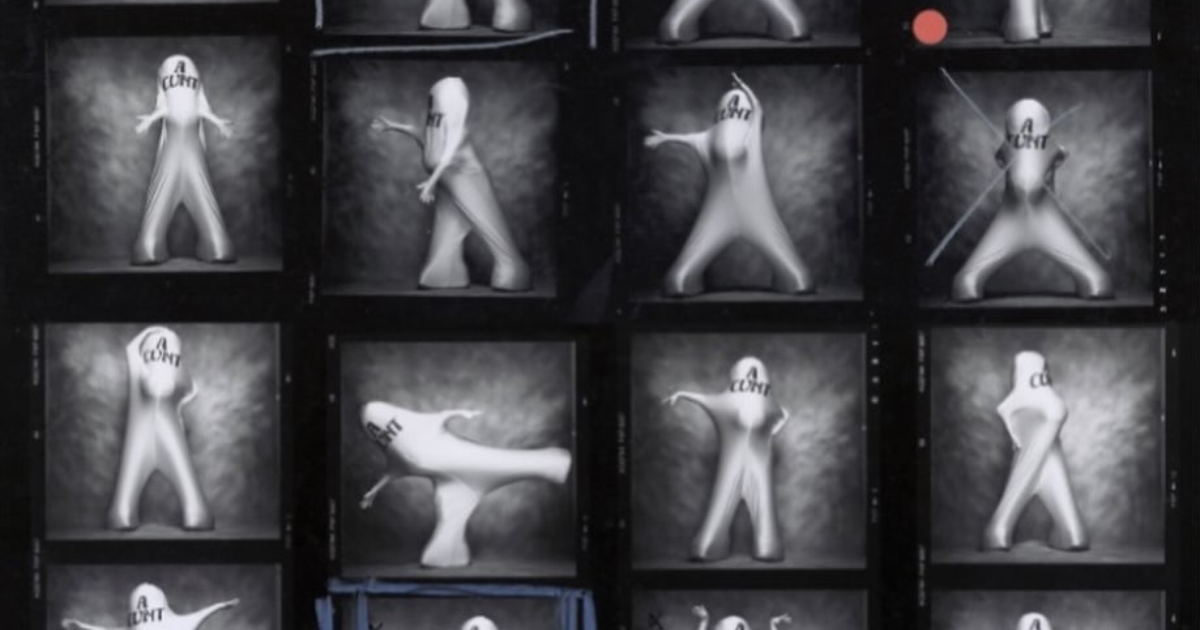To fill all the space
The story of Leigh Bowery and his desire to be everything at once

When we speak of eras, we must understand that they are defined not only by events or ideas, but also by figures who can sense the spirit of the times and respond to it. One such figure was Leigh Bowery – a phenomenon, an artist, and a performer who, in the 1980s and 1990s, transformed London’s art and fashion scenes into arenas of experimentation with the body, identity, and aesthetics. He lived on the border between art and provocation, theatre and reality, mask and authenticity. And if one had to describe him in a single word, it would likely be “wholeness.” Not in the sense of calm or completeness, but in the sense of total immersion in what he did.
Leigh was born in 1961 in a small Melbourne suburb called Sunshine – a name that goes in contrast with his experience. It was a place with rigid ideas of normalcy and propriety, where creativity, if it existed at all, was meant to be modest, useful, and unassuming. His parents, members of the Salvation Army (a Protestant Christian charitable organization), dreamed of a stable, simple life for their son. But Leigh knew from an early age that his path would be different. He was drawn to music, made things with his hands, loved theatre, and was fascinated by sewing and clothes. These weren’t mere hobbies but a profound need to express himself in ways words couldn’t capture.
Leigh enrolled at the Royal Melbourne Institute of Technology to study fashion, but the Australian scene felt too small. In 1980, he moved to London – a city where club culture, art, music, and fashion were exploding, infused with the spirit of glam rock, punk, and postmodernism.
London and the art of transformation
By the time Bowery arrived in London, the club scene was already experiencing a new boom. New Romantic – a style and movement inspired by decadence, theatricality, and eccentric fashion – was the perfect ground for Leigh. He began experimenting with his appearance: makeup, complex costumes, structures that disguised or exaggerated the body. He became a figure impossible to overlook at clubs, and soon, not just a participant in the scene, but one of its co-creators.
In 1985, Leigh became the host and promoter of the club “Taboo”, which quickly gained cult status. The atmosphere of “Taboo” blended boldness, irony, and acceptance. People didn’t come just for the music or the dancing – they came for the right to be different.
Leigh never saw his looks as a masquerade. They were living statements about the body, about freedom, about the presence or absence of boundaries. His approach to fashion was far from traditional design. He didn’t create collections in the usual sense – his “pieces” were installations made on a single person: himself.
Fashion is born from impulse
One of Bowery’s main themes was the body. He reimagined corporeality – hiding shapes, creating new ones, exaggerating, transforming. His costumes weren’t meant to be beautiful. They were forms of thought. He deliberately rejected conventional beauty to remind people that appearance is not the same as value.
It was precisely this idea that made him significant not only in fashion but in contemporary art. He collaborated with dancer and choreographer Michael Clark, designed costumes for performances, appeared on television, worked with musical groups, and exhibited in art galleries. In 1988, Bowery presented himself as a living installation in a gallery, behind glass, observed by visitors. Every day, he appeared in a new guise, showing not only the plasticity of his image but also the vulnerability of a person constantly under others’ gaze.
One of the most delicate and profound moments in his biography was his collaboration with painter Lucian Freud. Leigh, known for his elaborate layered appearances, posed nude for Freud, without makeup or costume. It was a rare moment of acceptance. Bowery himself said these portraits helped him see himself in a new light.
Legacy and contradictions
Although Bowery died in 1994 due to complications from illness, his ideas live on. They have influenced countless designers – from Alexander McQueen to Comme des Garçons, from John Galliano to Maison Margiela. His view of fashion as a live performance became part of the visual language of an entire generation. He didn’t so much inspire artists and designers as permit them to be other.
Today, we can see echoes of Bowery in many realms – in theatre, on runways, in pop culture. But his influence isn’t limited to aesthetics. It lies deeper, in how he thought about the body, identity, and freedom.
And yet, his path was not only inspiring. Leigh’s behavior raised questions: he could be cruel, unpredictable, and difficult. His energy wasn’t always constructive – at times, it was destructive. Perhaps it was the puritanical rigidity of his childhood, with its strict boundaries, unyielding morality, and the silence in which one could not be oneself, that pushed him toward art – a space where all that could be let go.
But he didn’t want to be perfect. He just wanted to be. And to be as real as possible.


